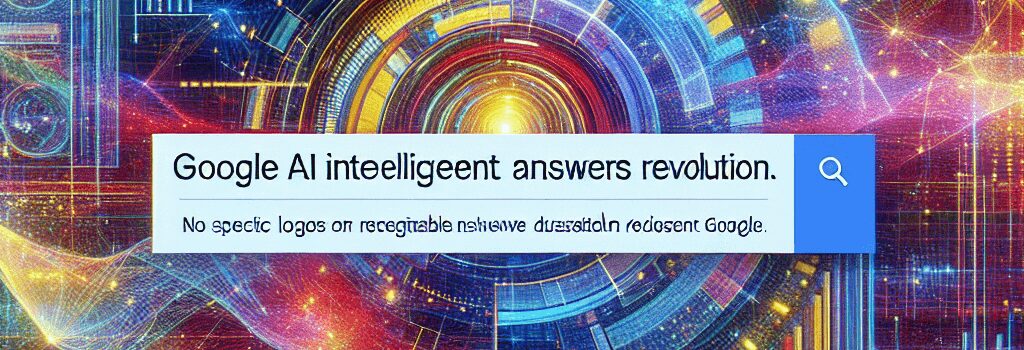Google AI Mode Search: Intelligent Answers Revolution

Google used to champion the ten blue links paradigm. Today at I/O 2025, the company announced that AI Mode search is graduating from experimental Labs status to the main search interface. This marks a major shift in information retrieval, blending generative AI, large-scale context, and personalized data signals to deliver comprehensive answers instead of isolated web links.
A New Era Beyond Blue Links
Gone are the days when users scrolled past sponsored results to find organic links. AI Mode folds in a custom version of Google’s Gemini 2.5 large language model, leveraging dynamic retrieval-augmented generation (RAG) pipelines across a federated network of edge servers. Instead of ten links, you receive a synthesized, structured overview—complete with tables, embedded citations, and follow-on prompts.
“AI Overviews was a warm-up. AI Mode is the main event,” said Google’s head of search, Liz Reid, during her keynote.
AI Mode: Graduation and Capabilities
Since its Labs debut, AI Mode has shown that users enter longer, multi-part queries—averaging 25% more tokens per session—and dwell time on results has increased by 40%. Google reports that AI Mode can process input queries up to 8,192 tokens, with a 128k token context window for follow-up prompts, enabling deep dives into complex subjects like medical literature or legal analysis.
- Personalization: Optional Gmail integration allows AI Mode to reference booking confirmations, receipts, and calendar events.
- Latency: Core AI Overviews target sub-500ms response times, while full AI Mode answers average 1.2 seconds, scaling to 3 seconds for agentic Deep Search reports.
- Device coverage: Available on desktop, Android, iOS, and soon integrated into ChromeOS as an assistant widget.
Technical Architecture Under the Hood
AI Mode leverages Google Cloud TPUs (version 5e) and Vertex AI custom pipelines. The Gemini 2.5 model uses a mixture-of-experts (MoE) backbone with 1.4 trillion parameters distributed across specialized shards. Queries first hit an inference orchestration layer that performs real-time document retrieval from an optimized index built on BigQuery and Colossus file storage. Retrieved passages are scored via a dual encoder retrieval head and then fed into the generative model for answer synthesis.
- Ingress: Query arrives at nearest Google edge node with a sub-20ms RTT.
- Retrieval: Vector search on PaLM Embedding Engine returns top 50 passages in 30ms.
- Generation: Gemini 2.5 composes a structured answer, referencing source URLs with Markdown-inspired citation tags.
- Serving: The final payload is delivered via HTTP/3 with QUIC, achieving an average P95 latency of 1.5s.
Privacy and Data Security Considerations
Google emphasizes user control. Data sharing from Gmail or Drive is opt-in, and all personal context is processed in an encrypted in-memory sandbox, not persisted to long-term logs. Google implements differential privacy and homomorphic encryption in select RAG operations. Users can toggle context sharing at any time. For enterprise customers, Google Workspace admins gain granular audit logs via Cloud Logging to monitor AI Mode usage.
“We built AI Mode with privacy by design, ensuring user context stays private and ephemeral,” stated Google Privacy VP Alma Whitten.
Implications for Web Ecosystem and SEO
The rise of AI-driven summaries could reshape how publishers optimize content. Traditional SEO metrics like click-through rate (CTR) may decline as fewer users click external links. Publishers will need to mark up pages with structured data (JSON-LD Schema.org) and semantic annotations to ensure their content appears in AI Mode citations. Industry experts predict that transparency tools like Google’s Fact Check Explorer will gain prominence to combat hallucinations.
Dr. Panos Ioannidis, a search specialist at Stanford, warns, “We must adapt to a world where generative AI is the front line of search. Publishers should embed verifiable data endpoints directly in their pages to feed into RAG systems.”
Road to Artificial General Intelligence
Google co-founder Sergey Brin projected that Gemini could reach AGI by 2030. Yet DeepMind CEO Demis Hassabis tempers this view, noting current models still struggle with simple arithmetic and commonsense reasoning. Even so, AI Mode’s agentic Deep Search—set to roll out later this year—uses multi-hop reasoning across live web sources, resembling a basic autonomous assistant.
Expert Perspectives and Future Outlook
Yejin Choi, director of the NLP Lab at University of Washington, applauds the persistent integration of retrieval and generation but cautions about overreliance: “Combining RAG and LLMs is powerful, but monitoring factual accuracy remains challenging as models scale.”
Looking ahead, Google plans to open certain AI Mode endpoints to third-party developers via Vertex AI Search APIs, fostering an ecosystem of specialized assistants, from coding copilots to legal research bots. Google also hinted at applying reinforcement learning from human feedback (RLHF) in production to further align AI Mode’s outputs with user values.
As AI Mode gradually displaces blue links, users and web publishers must adapt. For now, AI Mode represents both a leap forward in natural language search and a bellwether for the future of generative AI-driven information access.